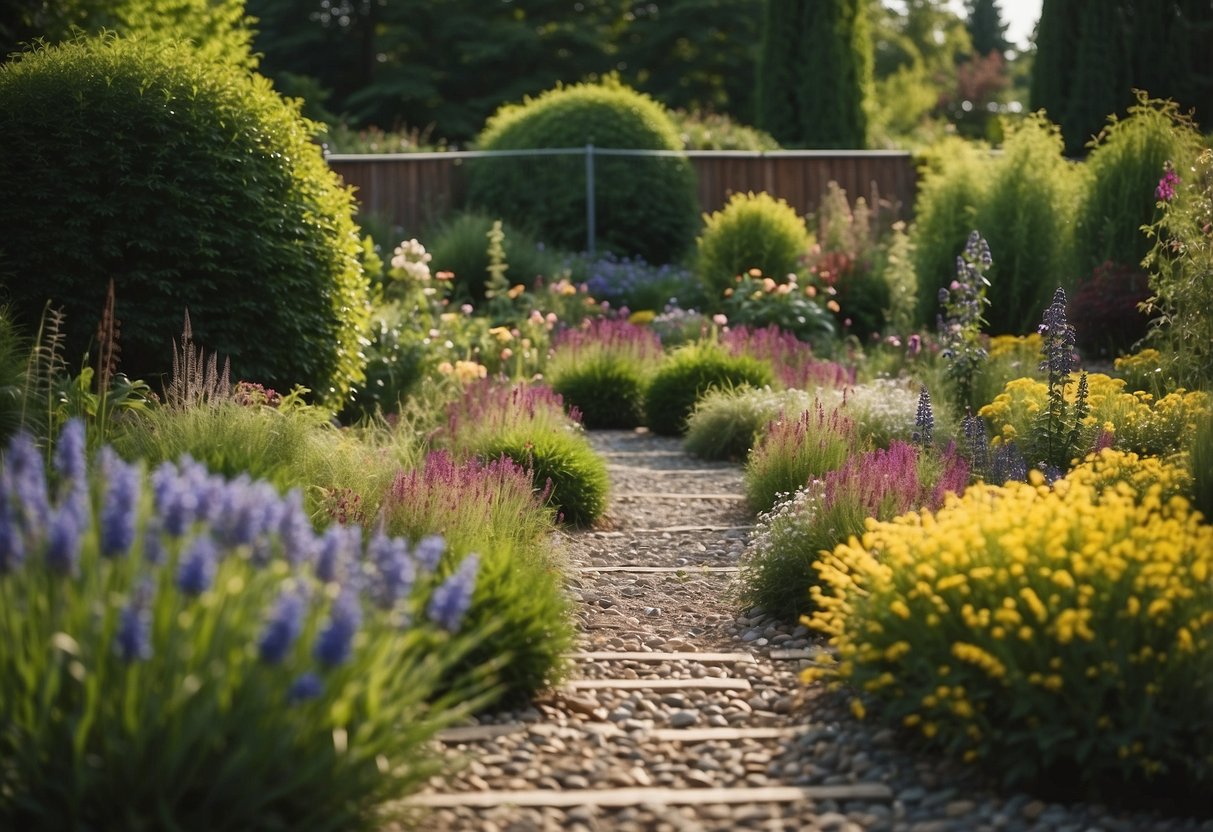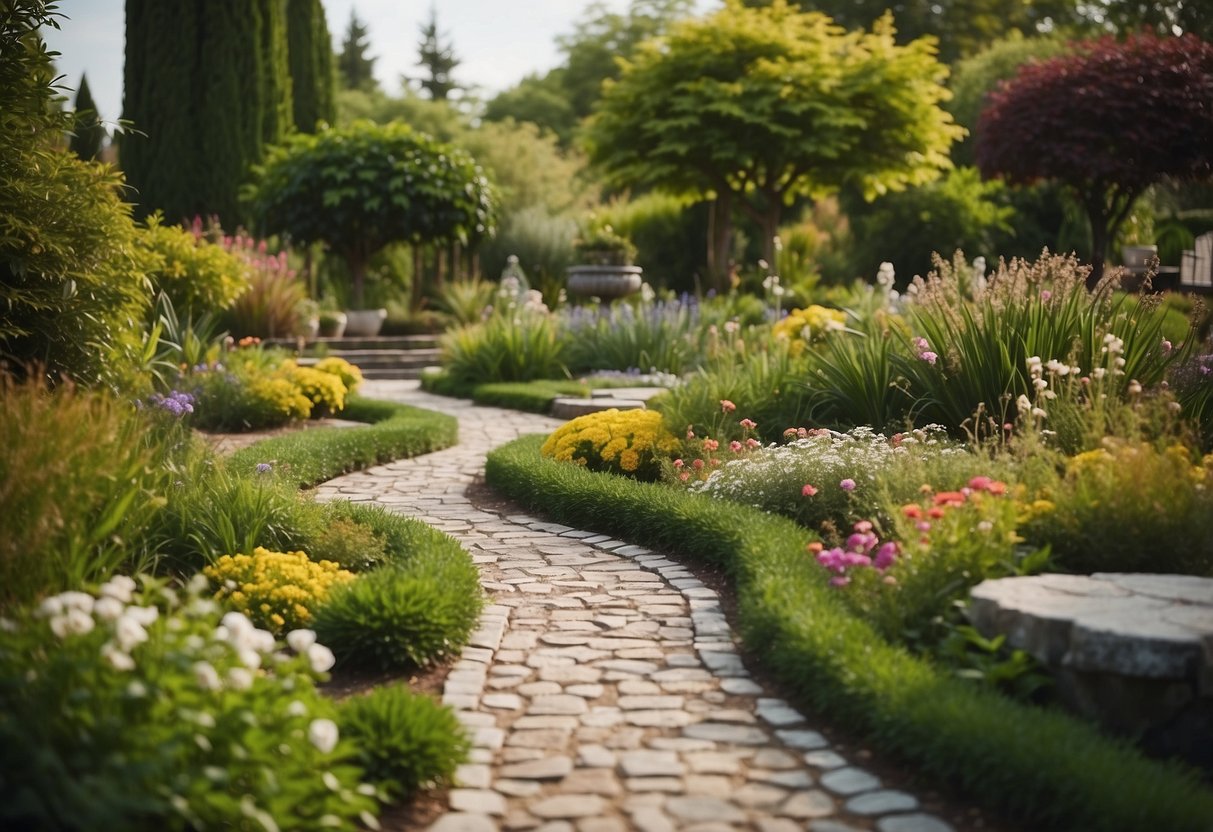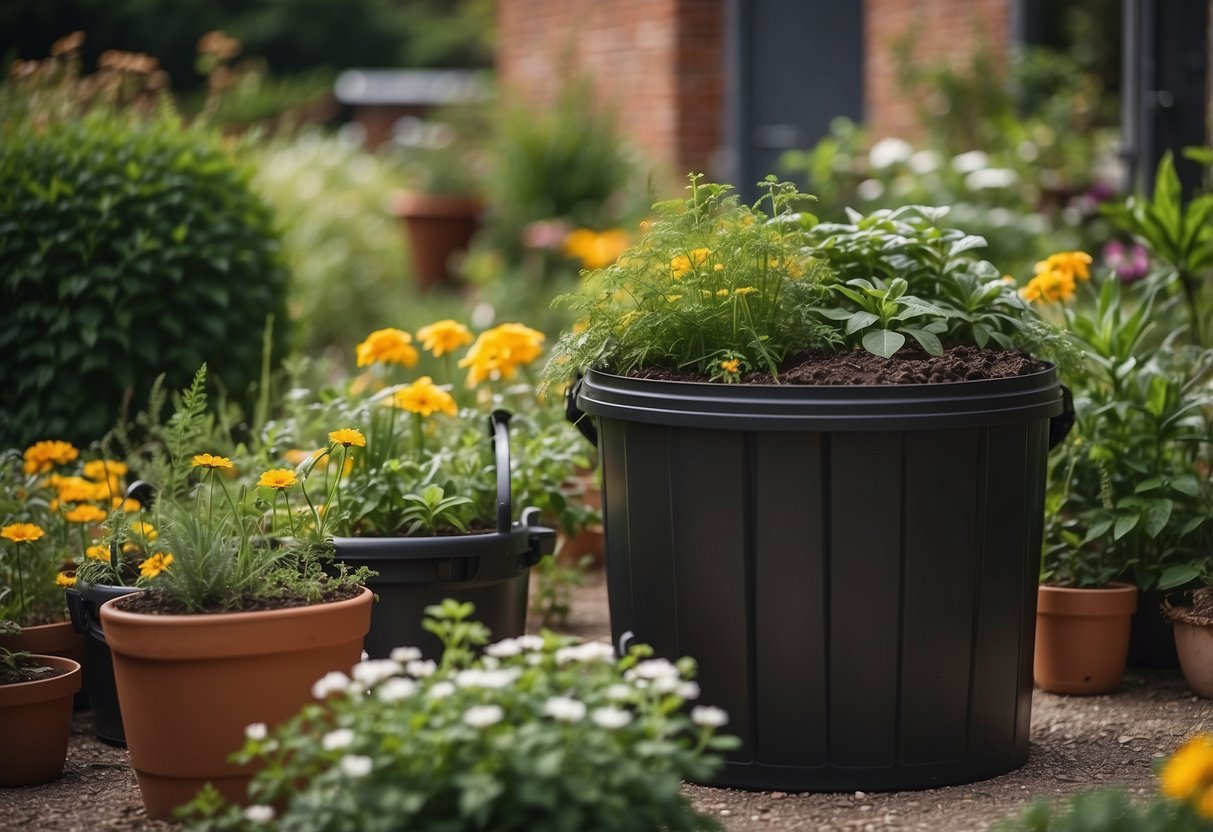Garden Ideas to Get Rid of Grass: Transform Your Lawn into a Beautiful Oasis
Are you tired of mowing your lawn every weekend? Many homeowners are looking for ways to create beautiful outdoor spaces without the hassle of maintaining a grass lawn. Exploring garden ideas to get rid of grass can help you transform your yard into a relaxing and low-maintenance oasis.

You might be surprised at how many creative and practical alternatives exist. From vibrant plant-filled gardens to sleek and modern artificial turf, there are numerous options that suit different aesthetics and climates. Discovering the right approach for your yard can make a significant difference in how much you enjoy your outdoor space.
1) Artificial Grass

Artificial grass is a fantastic option if you want a low-maintenance lawn.
It looks great year-round and doesn’t need mowing, watering, or fertilizing.
You can use it to create unique garden designs, like a checkerboard pattern with pavers or thick exotic borders.
Pets also love artificial grass because it’s soft and easy to clean.
Make your outdoor space colorful and inviting with artificial turf.
2) Clover Lawn

Clover lawns are a great alternative to traditional grass lawns. They are low-maintenance and stay green all year round. Clover is drought-resistant and requires less water than grass.
You also won’t need to mow as often because clover grows shorter. Plus, it’s great for bees and other pollinators. Consider giving clover a try for a lush, eco-friendly lawn without the hassle.
3) Herb Garden

Turning your lawn into an herb garden is a great idea. You can grow useful plants like basil, rosemary, and oregano right outside your door.
Herb gardens add beauty and practicality to your yard. They also attract beneficial insects and can be easy to maintain.
Mason jars filled with herbs can be an attractive addition to your kitchen, and you can move them outside for sunlight. For more ideas, check out some creative herb garden ideas.
4) Wildflower Meadow

Transforming your lawn into a wildflower meadow is a beautiful and eco-friendly idea. It encourages biodiversity and provides a habitat for bees, butterflies, and other wildlife.
Start by evaluating your lawn’s soil, grass type, and the amount of sunlight it gets throughout the day. This helps you choose the right wildflowers.
You can remove the grass and top layer of soil using a spade. Then, plant a mix of wildflower seeds, focusing on varieties that are native to your area. Remember to include some grasses for balance. Regularly cutting the meadow after the first flowering season will keep it looking great each year.
For more detailed steps, check out these guides on creating a wildflower meadow and using wildflower turf.
5) Ground Cover Plants

Ground cover plants are a great substitute for grass. They require less maintenance and add beauty to your garden.
For sunny spots, you can plant Creeping Phlox. It blooms in bright colors and thrives in full sun.
If you have shaded areas, consider varieties like Stonecrop. It’s heat and drought tolerant and looks great with its tiny summer blooms.
Another option is white clover. It’s low-growing and perfect for a lush, green look.
6) Stepping Stones Garden

Stepping stones are a great way to transform your garden and reduce grass. They add structure and style to your outdoor space. You can use different shapes and sizes to match your garden’s look.
To start, plan the path and use your stepping stones as markers. Then, clear the grass and soil where each stone will go. Placing the stones is easy, just lay them out and brush sand and soil around the edges.
A pebble border or mosaic designs can add extra flair.
7) Rock Garden

A rock garden can give your yard a beautiful and low-maintenance look.
You can start by choosing a variety of rocks and stones. These will form the base of your garden. Place them in a natural, random way for the best effect.
Add plants that thrive in rocky soil, like succulents and small shrubs. These plants need little water and care.
To keep grass from growing back, you might use organic mulch like wood chips. This creates a barrier that stops grass growth and makes your garden look neat. For more tips, read this article.
Consider using a vinegar and salt solution to kill any stubborn grass that pops up. Spray it directly on the grass for effective results. Check out this guide for more information.
8) Mulch Layers

Using mulch layers can help you get rid of grass in your garden. Start by mowing the grass as short as possible. Then, lay down sheets of cardboard or newspaper over the grass.
Make sure the sheets overlap to block all sunlight. Add a thick layer of mulch on top, about 2-3 inches deep. This will smother the grass and prevent it from growing back.
Mulch can be wood chips, straw, or other organic materials. Keep the area well-watered to accelerate the decomposition process. This method not only gets rid of grass but also improves soil quality. For more tips, check out how to stop grass from growing through mulch.
9) Decorative Gravel

Using decorative gravel in your yard can make it look great without a lot of work.
Gravel comes in many colors and sizes, so you can find a style that fits your space.
It is also very practical and helps to keep weeds away.
You can use gravel to create paths and seating areas. This provides a clean, modern look and reduces lawn maintenance. For more ideas, you can check out ways to use gravel in your yard.
10) Flower Beds

Creating flower beds is a great way to get rid of grass and add beauty to your garden. You can start by removing the grass manually. This involves digging up the sod and clearing the area.
Using mulch is another effective method. A few inches of mulch can prevent grass from growing by blocking sunlight.
You might also try pouring boiling hot water over unwanted grass, making it easier to get rid of. Be careful while handling hot water.
You can find more tips on keeping grass out of your flower beds at Gardening Know How.
Benefits of Replacing Grass

Replacing the grass in your yard comes with several practical advantages. You can save water, reduce upkeep, and help the environment.
Water Conservation
Grass lawns require a lot of water to stay green and healthy. In many regions, this results in high water bills and unnecessary resource use. Replacing grass with drought-tolerant plants or decorative rocks can significantly cut down on water consumption. Native plants, in particular, are well-suited to the local climate, needing far less water.
Installing a garden with mulch and native plants can create a beautiful, low-water landscape. This approach not only conserves water but also makes your yard more sustainable. You’ll find that your garden still thrives even when water restrictions are in place.
Reduced Maintenance
Grass lawns demand regular care, including mowing, edging, and fertilizing. These tasks can become time-consuming and costly. By replacing your grass with low-maintenance plants or ground covers, you can reduce the amount of work required to keep your yard looking great.
For instance, creeping thyme and other walk-on plants are excellent choices for ground cover. These plants don’t need mowing and can handle foot traffic. Mulching flower beds also cuts down on the need for frequent weeding, freeing up your time for other activities.
Environmental Impact
Traditional grass lawns often rely on chemical fertilizers and pesticides to maintain their appearance. These chemicals can harm local wildlife and pollute waterways. Removing grass and planting a diverse garden can eliminate the need for these harmful products.
Additionally, gardens with a mix of shrubs, flowers, and trees support local ecosystems. They provide habitats for birds, bees, and other pollinators. Eliminating grass helps create a healthier and more vibrant environment around your home. Choosing native plants further enhances the benefits, as they are already adapted to the local climate and soil conditions.
Popular Alternatives to Grass

There are several creative and practical ideas for replacing traditional grass lawns. Each option offers unique benefits, whether you’re aiming for lower maintenance, visual appeal, or sustainability.
Ground Covers
Ground cover plants are a great way to create a lush, green area that needs less care than grass. Creeping Thyme and Creeping Jenny are popular choices. They spread quickly, handle foot traffic well, and are very hardy. Clover is another excellent alternative; it enriches the soil by fixing nitrogen, stays green with little water, and is soft underfoot.
Cottoneaster is another versatile option; it’s easy to grow and perfect for slopes. Consider Barren Strawberry if you prefer an evergreen look that bronzes up in the winter. These ground covers provide a beautiful, low-maintenance way to replace grass.
Hardscaping Options
Hardscaping involves using materials like stone, wood, or concrete to create functional and attractive areas. Gravel paths and patios offer a low-maintenance alternative to grass. They’re easy to install and can create a sleek, modern look. Bark chippings are another practical choice, especially for smaller areas or pathways. They’re soft underfoot and blend well with surrounding plants.
Xeriscaping can give your yard a stylish and modern feel. It involves spaced-out planting in a gravel-covered yard, making it a smart choice for dry climates. Hardscaping provides durability and reduces the need for watering and mowing, making your garden easier to maintain.
Artificial Turf
If you want the look and feel of grass without the upkeep, artificial turf is a fantastic option. It stays green all year round, requires no watering or mowing, and is durable enough to handle heavy foot traffic. Modern artificial lawns look more natural and are pet-friendly.
Artificial turf is also a great solution for shaded areas where real grass struggles to grow. It’s easy to install and can be used in sections of your yard or for the entire lawn. This option gives you a lush, green look with very little effort.







